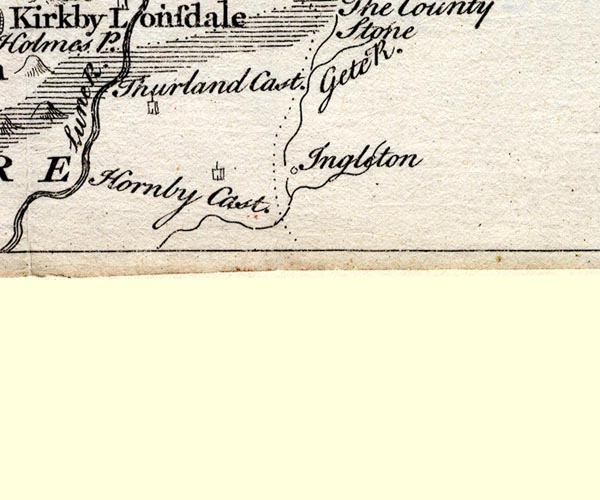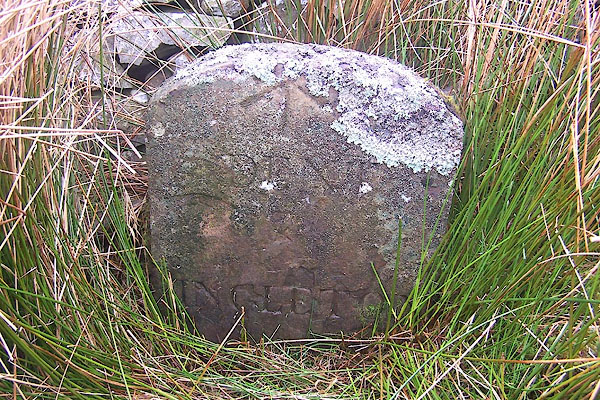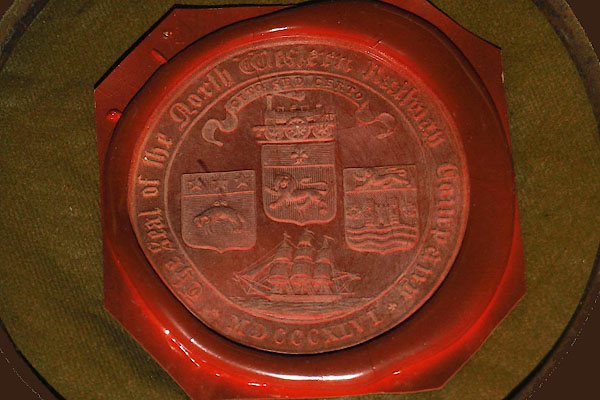




placename:- Ingleton
 goto source
goto sourcePage 27:- "..."
"Thence to Ingleton, where I liv'd"
"Till I brake a Blacksmith's Head,"
"Which done, Women rush'd in on me,"
"Stones like Hail shower'd down upon me:"
 goto source
goto sourcePage 29:- ""
"Whence astonish'd, fearing harming,"
"Leave I took, but gave no Warning."
placename:- Ingleton

SMP2SDT.jpg
"Ingleton"
Circle.
item:- Dove Cottage : 2007.38.59
Image © see bottom of page
 goto source
goto sourceAddendum; Mr Gray's Journal, 1769
Page 219:- "..."
"... we came to Ingleton, eighteen miles; it is a pretty village, situate very high, and yet in a valley, at the foot of that huge monster of nature, Ingleborough: two torrents cross it, with great stones rolled along their beds instead of water; and over them are flung two handsome arches. ..."
 goto source
goto sourceTour to the Caves in the West Riding of Yorkshire, late 18th century
Page 244:- "..."
"... Many of the smaller farmers, betwixt Kirkby-Lonsdale and Kendal, earn their bread with carrying coals, during most part of the year, from the pits at Ingleton, Black-Burton, or properly Burton-in-Lonsdale, to Kendal and the neighbouring places ..."
 goto source
goto sourcePage 251:- "..."
"After we had regaled and rested ourselves comfortably at the Bay-horse, we took an evening walk, about a mile above the town [Ingleton], to the slate quarries by the side of the river Wease, or Greta, which comes down out of Chapel-in-the-Dale, and joins the Kingsdale river at Ingleton. ..."
 goto source
goto sourcePage 252:- "..."
"Ingleton is a pretty village, pleasantly situated on a natural mount, yet at the bottom of a vale, near the conflux of two"
 goto source
goto sourcePage 253:- "rivers, over which are thrown two handsome arches. If the streams are sometimes small, the huge stones and fragments of rocks which are rolled down the beds of these rivers, will serve to show that at other times they are remarkably full and impetuous. The church-yard, [1] in the middle of which stands a neat sacred edifice, commands a fine view of the vale of Lonsdale, almost as far as Lancaster. The murmurs of the streams below sooth (sic) the ear, while the eye is selecting a variety of objects for its entertainment. On the back-ground are the lofty mountains of Gragareth, Whernside, and Ingleborough, the summits of which, when they are not enveloped in the clouds, can scarcely be seen for their high intervening bases. ... Amongst other entertainments, the civil usuage and good accommodations we met with at our inn, contributed not a little to heighten the amusements and pleasures of the day."
"[1] The editor Barnaby's Journal has this distish on Ingleton -"
"Purgus inest fano, fanum sub acumine collis; / Collis ab elatis actus &auctus aquis."
"The poor man's box is in the temple set: / Church under hill, and hill by waters beat."
placename:- Ingleton
 goto source
goto source click to enlarge
click to enlargeC38333.jpg
page 333-334 "INNS. Ingleton, Bay Horse. ..."
item:- JandMN : 228.1
Image © see bottom of page
 goto source
goto sourcePage 203:- "..."
"In the Parochial Chapel of INGLETON,- a village situate on the confines of the West-Riding of Yorkshire, and on a lofty bank of the Greeta, one of the"
 goto source
goto sourcePage 204:- "tributaries of the Lune,- stands a Norman Font - a venerable relic of those byegone times, when men grudged neither the best of their wealth nor of their work in honour of Him who is the Head of the Church; and though long thrown aside to make room for a nondescript pillar and basin, it is now restored to its former sacred uses, and, as its value is more justly appreciated, it will doubtless be carefully preserved."
"The style of the work is of the later Norman period, and its date may probably be referred to the middle of the twelth century. The ornamental sculpture is of a rich and elaborate character; and the sculptor's aim has been to represent some of the earlier incidents of the Gospel narrative. In the central compartments, as expanded in the print,[1] we see the Virgin seated with the Infant Saviour on her knees,- Joseph with the implements of his trade as carpenter, being on the right hand,- and on her left the Eastern Magi are approaching with their offerings. The massacre of the Innocents is then represented,- with the cruel Herod giving his orders for their destruction,- and Rachel weeping for her children, with an expression of grief in her countenance very effectively portrayed. The youthful figure on the side of Joseph may be intended for the Baptist; but the remaining personages are not so clearly distinguished, unless there be some reference to the Purification of the Virgin."
"These sculptures stand within a series of interlaced arches on pillars of good character, the latter being cut away where they would have interfered with the mounted figures which are introduced. Over this arcade is a rich bold cornice of grotesque heads alternating with reticulated knots of varied and intricate design."
"[1] Binns, del. Monkhouse, lithog, 1844."
 goto source
goto sourcePage 205:- "Of Ingleton we are told by Barnaby, an old rhymster, who sang a hundred and fifty years ago -"
""
"Pirgus inest fano, fanum sub acumine collis;"
"Collis ab elatis actus et auctus aquis."
""
"The poor man's box is in the temple set;"
"Church under hill, the hill by waters beat."
placename:- Angleton

FD02SD67.jpg
"Angleton"
item:- JandMN : 100.1
Image © see bottom of page
 |
SD6973 Bay Horse () |
 |
SD79668428 boundary stone, Dent/Ingleton (2) |
 |
SD6974 Ingleton Station () closed |
 |
SD7074 quarry, North Yorkshire (2) () |
 |
North Western Railway () |
